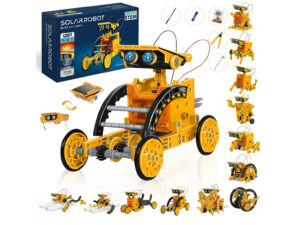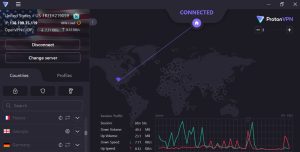Pre-screening, AI and digital tools mean that service providers can be more cautious about doing in-person work.
TechRepublic’s Karen Roby spoke with Ashish Joshi, CEO of goDeskless, an app for deskless workers, about how the pandemic has changed the way deskless workers handle field calls. The following is an edited transcript of their conversation.
SEE: TechRepublic Premium editorial calendar: IT policies, checklists, toolkits, and research for download (TechRepublic Premium)
Karen Roby: The global workforce, of course, shifted to a remote setup virtually overnight, taking many companies by surprise. Before we get into the nitty-gritty behind the tech that can help, talk a little bit about your research. How many workers are we talking about who are truly remote now? When we say deskless, who does that apply to, and what do you really mean by that?
Ashish Joshi: I’ll take the second question first. That’s easy to understand. How do you define deskless? Deskless originally meant people who are feet-on-the-ground, who provide your services such as on-site deliveries, or even your crews coming to your home and servicing you as a consumer.
That number was about 2.7 billion worldwide. That was last year before the pandemic hit. Now, since the pandemic, everyone’s been at home, and everyone’s requesting services at home, so that number has gone up significantly. We are still awaiting the stats on it, but I am assuming that number has gone up at least by 50%. So, we are looking at about 4 billion people now.
Karen Roby: Wow, we’re talking about a significant number of people in our world that are working this way. So, talk a little bit about the differences from the type of work you used to do, or the clients that you had, and the type of workers that you were assisting, versus now in terms of their roles.
Ashish Joshi: We’ve had a deskless workforce, or the people in the field, which was traditionally called field service people, has moved on from that for a while now. But we used to have that workforce and there was a certain way they used to engage. I think what has happened now, that there’s more focus on remote engagement. There’s more focus on secure types of engagement when it comes to consumers. Obviously, people don’t want random people, people you don’t trust, to come through our homes. Some people completely are avoiding any of the visitor engagement at their home.
SEE: Natural language processing: A cheat sheet (TechRepublic)
The type of service that needs to be delivered, the mode of engagement has shifted quite a bit. There is a lot of focus, especially on a remote engagement, as I said. But there’s also a focus on pre engagement checks. You know, before I come onsite, let me actually go to my checklist and ensure that A, I don’t have to repeat the visit again, or B, I’m well equipped, or C, can I help you through any kind of remote technology and maybe you can avoid the visit all together. That way you’re safe, and I’m also safe from exposure. These are the changes that we are seeing now. There is a lot more focus on the remote and secure engagement.
Karen Roby: How prepared are, or were, companies? I mean, did you encounter some that, as far as digital tools go, they were just on this end of the spectrum? They had no clue, maybe really lagging in terms of a digital transformation. Or were you a little bit surprised by where people actually stood at that time, say, last March, April, May, when we made the transition?
Ashish Joshi: That’s a great question. You know, before the pandemic hit, we had these tools kind of segregated into different categories. There were field tools that were labeled the data side of it, which is the engagement side, right? I have a customer, I have a request, someone’s going to handle it. That information is there. Then someone’s going to come and take a look at it. And there were collaboration tools, like web collaboration, for example.
There was no connectivity or type connectivity between them, right? We use some of the leading web collaboration platforms today. Like the one that we’re using today, right? How do I take that into my data and weave that, tightly integrate and couple that with my process, my business processes? Engage with the customer, schedule someone and then fulfill that, which is the last-mile service?
SEE: Companies are using AI to hit business goals, even though they can’t explain how it works (TechRepublic)
How do I take the exact interface that we’re using today, embed that into that process so at any given point, me as a consumer can talk to someone who’s trying to help me schedule it? Or Karen needs help and she can talk to Ashish who’s coming to her place to help, and we can engage in something like this? That did not exist and that doesn’t exist even today. And that’s where everyone’s kind of scrambling to go.
Then there is a third angle to it, which has come in, which is we are all familiar with the shared economy tools. And I’m talking about Ubers of the world, or let’s say DoorDashes of the world. I mean, that market has gone significantly up. Everyone wants things to be delivered. And if you look at the fundamental difference between the traditional tools that help these deskless processes, and let’s say Uber or shared economic tools. In traditional tools, you always engage with a person sitting behind your desk.
You’re always calling someone and that person is going to say, “Let me put you on hold for 30 seconds. Let me find someone for you.” And sure enough, you know that person’s going to come back and say, “Ashish is going to be at your place, and it’s going to be next Tuesday between 3 p.m. to 6 p.m.” You didn’t choose it. You were told the time. You know someone named Ashish is coming to your home. You’ve no idea who Ashish is. And you don’t know whether Ashish is going to show up until he shows up. Right?
SEE: Chatbot trends: How organizations are leveraging AI chatbots (free PDF) (TechRepublic)
Uber has changed that. We never talk to an Uber employee ever. I haven’t. But I can define when I need my ride. I can exactly see who’s coming into my place. I can see where they are in their route. I know exactly what time frame, in how many minutes they’ll arrive. That mindset has taken off. Because if I can have someone like Uber deliver that experience, why is my traditional process not delivering the experience? And that is a shift that’s happening. That shift has been kind of propelled because of the pandemic, also because of demographics, also because of the technology. So, this is what we are seeing.
Karen Roby: When we talk about the technology behind different platforms, and what you guys believe can be of help. Talk a little bit about how artificial intelligence is factoring into this.
Ashish Joshi: AI is driving this big time. I’ll give you a simple example. Let’s go back to the Uber example. A very simple one. What Uber has done, they’ve created a platform that is AI-driven pretty much. And what they’ve done, it’s a simple thing. They’ve taken the demand: People who need rides. They’ve taken the supply: People who have cars and some free time who can actually give them rides for some money.
They’ve established this platform that brought the demand and supply together and let AI do its work. And by doing so, by marrying the demand and the supply together and matching them, what they’ve done, they’ve taken the middleman out. When I said, we never talk to an Uber employee, that doesn’t mean there are no Uber employees monitoring what’s going on. There are. But they’re not playing the middleman. It’s the AI that’s doing the job.
SEE: AI in the OR: One company is closing the gaps in surgery using technology (TechRepublic)
In the commercial, in the industrial sector, in the traditional industries that are asset-driven, that is still missing. We still have to go through our technologies, talk to someone sitting behind the desk. AI has not taken the part there, and this is coming. That’s where AI actually differentiates. That has been missing in the traditional technologies today, and there are several benefits of it.
There are several ways AI can help you. Automation is one big thing. Second, I would say, security and remote engagement, that’s another thing. Find the right person for Karen, because Karen has XYZ product, so I can send her our number. That’s where AI comes in. Karen has certain preferences. Karen lives in a demographic area where there is, let’s say, certain restrictions. AI takes care of that, because you could be calling in. Your call could be picked up by someone who may not be in the U.S., And that person may not be aware of what challenges and what specifics that you have. That’s where AI comes in.
Karen Roby: AI, it’s pretty fascinating. The capabilities, what it can enable. Before I let you go here, what is the future of work? What does it look like? What do you see? That’s kind of a broad question, I understand that. But if somebody said to you, what does it look like a year, five years, 10 years from now, and how it’s been changed and shaped so much by this last year we’ve been in?
Ashish Joshi: Great question, again. I think there are three ways you have to look at this question. We have to look at this question from the demographics perspective. When I say demographics, who’s going to be the consumer? Who is going to be the decision-maker in the next three to five years’ time frame? Second question is the shift in the economic trends or the business trends. And the third, the technology itself.
SEE: World’s fastest supercomputer and AI tapped to predict tsunami flooding (TechRepublic)
So, let’s start looking at the technology. Five years ago, everyone was carrying a laptop, right? Today everyone carries a smart device, right, and they’re getting faster and faster. I have a mobile phone that has 80 gigs of ram today, and that’s faster than the laptop that I had four years ago, right? So, devices are getting smaller. They’re getting faster. Smaller devices mean I can carry them with me anywhere I want, and I don’t have a friction that I have to open a laptop and sit somewhere and find a table and chair. Now it’s on the go. So, from a technology perspective, it’s going to be on-the-go, where you are and when you need it.
Now, the business trends and shifting economic trends, we talked about on-demand economy, sharing model, which is Ubers and Airbnbs and DoorDashes of the world, right? That’s good, and the pandemic has fueled it. If I have a phone, and if I can simply press a button and I can order something and get it delivered, once I am onto that, I’m not going to go back.
In 2019, they estimated about 22 million people who first time used an on-demand, shared economy model app, or app-based service. They availed it. That was before the pandemic and that was US alone. And you can now see where this is going, right? That is the business shift that’s going to happen. We are seeing it now. Even B2B businesses are needing to bring this shared economy business model into their traditional business models. So, it’s happening.
And the first one is demographic. Five years from now it’ll be, I think they’re called Gen Zs, will be the driver’s seat, 25-year-olds now, in five years. And the Millennials will be the decision-makers for the households. I am OK with picking up a phone call and waiting for a couple of minutes for someone to come back to me. I can tell you my daughter, she’s 17, she’s not going to do that.
Karen Roby: Nope.
Ashish Joshi: She’s happy with someone, you know, I’m taking my phone, I’m going to do a couple of clicks and that takes care of it. If I don’t have to talk to someone, I am good.
Karen Roby: Right. Absolutely.
Ashish Joshi: The Snapchat generation, you know? Point, click, share and comment, and I’m happy doing that. So when you combine these three, you can get the picture of where things are going. And when you talk about deskless, remote, secure. That’s first. And then if needed, I’ll come to your place. That’s how it’s going to be.
Karen Roby: That’s how it’s going to be. Excellent. Very interesting. And I see it every day with my kids too. Really, when you talk about the generational differences, and Gen Z and X and Millennials and how they prefer things. If I tell my kids I’m going to call them, they just say, “Oh, can you just shoot me a message?” I mean, they just communicate differently. It’s just how things evolve. Super-interesting.
Also see
Source of Article




